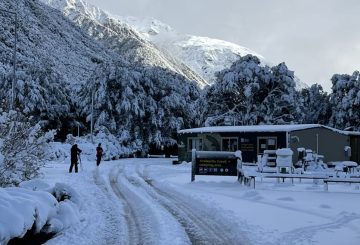ニュージーランドの主要港湾会社は、石炭の積み込み中に労働者が死亡したため、48万ドルの罰金を科されました。2022年4月、クライストチャーチのリトルトン港でばら積み貨物船「ETG Aquarius」の運航中に、ドン・グラントが襲われて死亡しました。
リトルトン・ポート・カンパニー(LPC)は、労働安全衛生法に基づく容疑で有罪を認めました。罰金はケラー裁判官によって科され、同裁判官は同社にニュージーランド海事局に35,000ドルを支払うよう命じました。LPCは判決の一部として事故に関する声明を公表しなければなりません。
その事件は石炭が船に積み込まれていたときに起こった。グラントは「ハッチマン」として働いていて、石炭の行き先をオペレーターに指示していました。彼は会社の手続きに従い、訓練を受けた職に就いていました。
Maritime NZの調査により、LPCにはいくつかの安全上の問題があることが判明しました。彼らは、特に石炭の積み込みは危険であることが知られているため、同社は事故を防ぐための措置を講じることができたはずだという。ニュージーランド海事局長のカースティ・ヒューレットは、この出来事を「悲劇的」と呼び、起こるべきではなかったと強調した。
事件後、LPCは安全性を向上させるための変更を行ってきました。作業員は指定された安全地帯にいなければならず、いつ石炭を注入できるかについても新しい規則が制定されました。また、地域の監視に防犯カメラを利用するケースも増えています。
LPCの最高経営責任者であるグレーム・サムナー氏は、同社が事故の責任を負い、深く後悔していると述べました。彼はグラントの家族に同情の意を表し、「ドンの妻、子供たち、家族、そしてこの悲劇の影響を受けたLPCのみんなに思いを馳せています。」
サムナーは、LPCが調査に協力し、石炭積み込み中の作業者の安全を確保するための変更を加えたと述べました。
グラントの家族は、彼が献身的な夫であり父親であると説明し、彼は多くの人に愛され、尊敬されていると言いました。彼らは、彼が仕事を楽しんでいる一方で、他の誰にもそのような喪失を経験してほしくないと言いました。「すべての労働者は、自分が安全で、愛する人のもとに帰ることを知る必要がある」と彼らは言った。


















































-360x245.jpg)










